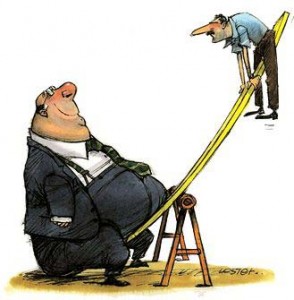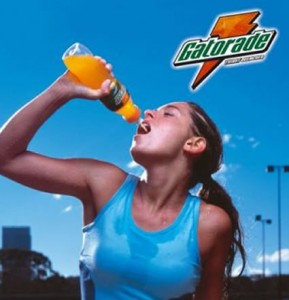- The biggest mistake most online-video marketing programs make is they promote and don’t entertain. I’m not talking about forced pre-rolls here, but “branded entertainment” or “sponsored” online videos. As a result, these videos are ignored, not shared, and often do more harm than good.
- In reaction to that mistake, we’re likely to go to the other extreme. Entertain but not promote the brand sufficiently, and that will line the pockets of YouTube webstars without benefiting brands.

So we’re on this entertainment/marketing see-saw, and it’s easy to lose balance:
- Sell Too hard: Well-meaning advertising agencies, perhaps fearing that the video would lose impact, have made some decisions I’d consider “deal breakers.” The campaign is trying too desperately to appease advertisers — like forcing the logo or a slate at beginning of a sponsored video, which is a good cue for audience to shut the video. This harms the creator and the brand, and you’ll know it when you see 50% “thumbs down” and “sellout” in the comments 100 times.
- Too soft: A recent film promoted via YouTube webstars, and the film itself was only mentioned briefly at the end of each video (after more than 75% of the viewers were likely long gone). I felt like that film wasn’t getting its fair share of the exchange. If people can’t recall the brand or identify it’s sponsored, you’ve probably gone too soft.
Instead, marketers might consider how to sell a product WITHOUT making a video feel like an advertisement… keeping in mind that audiences drop from an online-video in massive numbers, and eye-tracker reports the eye darting at the close button… as the viewer is just waiting for an excuse to move on… just like you’re not reading anymore because you’re looking at the lady below.
For instance if you’re promoting Gatorade, you’re notconcerned about how much screen time the bottle gets and whether it’s tagline and ingredients appear. Consistent use of a specific phrase may satisfy a brand or agency, but it’s not required and can be a turnoff. You simply want someone to buy Gatorade later, and that effect does not need intrusive advertising in a video.

Consider this time-tested but recently refined “10 Reasons Why Positioning Benefits Fail” It’s written by the smart peeps at Brand Development Network International Richard D. Czerniawski and Michael W. Maloney. I attended a class by these seasoned and street-smart marketers while at Johnson & Johnson, and the “boats and helicopters” are a nice way of cutting through academic bullshit. Parenthetically, isn’t it remarkable that some of the smartest brand marketers have absolutely the worst possible name and URL for their company (almost as bad as “Will Video For Food”).
I’m building off this must-read blog post, to develop some key takeaways for bridging the gap between a tight brand strategy and a fun and flexible online video.
- Make the benefit unique. If I don’t know the difference between well water and spring water, then you’d better be cheap, in a good bottle and not give me an after taste. The USP (unique selling proposition) is not developed by the YouTube creator, but they’ll need to understand itfor their creative brief unlesss it’s a straight up “product placement.”
- Go beyond matching benefits to broad needs. In this medium, we have a fairly tight community with a common group of values, needs, rules and annoyances. We use words like “sellout, fail, rofl” to signal what’s appropriate.If the need your product/service solves is as broad as “I want to feel safe about financial decisions,” here’s an opportunity to link to a more relevant need among YouTubers… Not a requirement, but really improves brand relevancy.
- Try narrowing down to a meaningful emotional need. I too have read enough creative briefs with “empowerment” or “get back to life.” Keep in mind that on video we can communicate these emotional benefits with an eyebrow or a smile, and don’t need to drop it verbatim (which is a turnoff for the viewer).
- Keep benefits extremely simple as not to weigh down a video. As a video creator I’ve received briefing documents with a list of 20 different phrases to use. It’s overwhelming to me and my viewers. Three is the magic number.
- Benefits should go beyond “cost-of-entry.” Yeah that video camera has great quality… is that the best you can do? Seriously. You might as well say “it’s as good as the rest.”
- It’s important for the creator to have some room to breathe, but you may want to help him or her avoid junking up a video with enthusiasm words that have no meaning: great, super, exciting, fun, awesome, wild…
- Agencies and marketers should provide strategic language that helps provide the creator with direction. A slogan verbatim is nice, but a webstar expressing the right message is even better.
